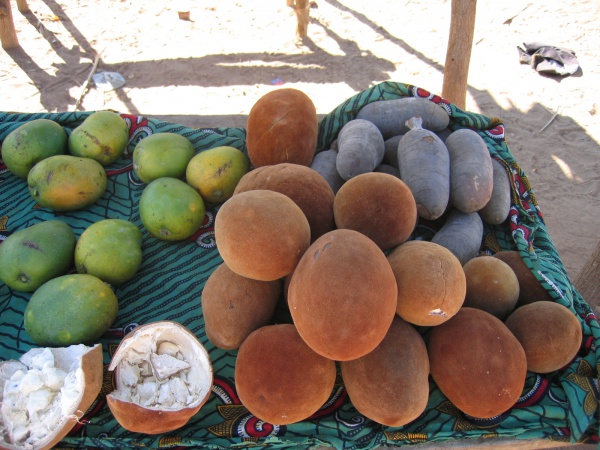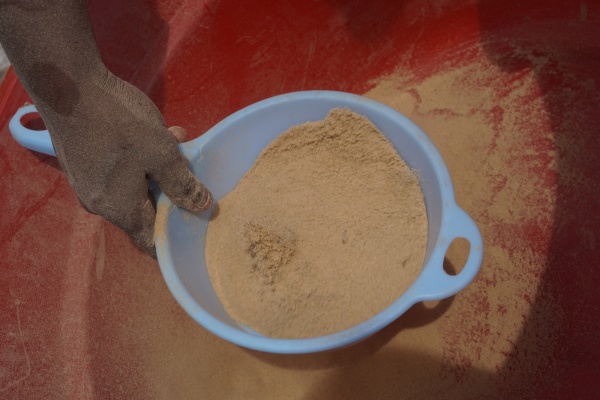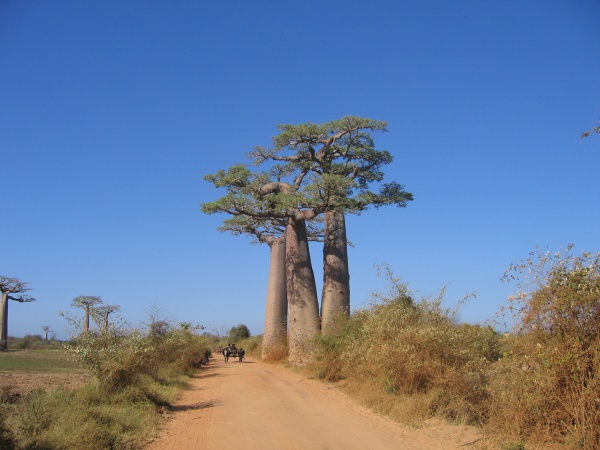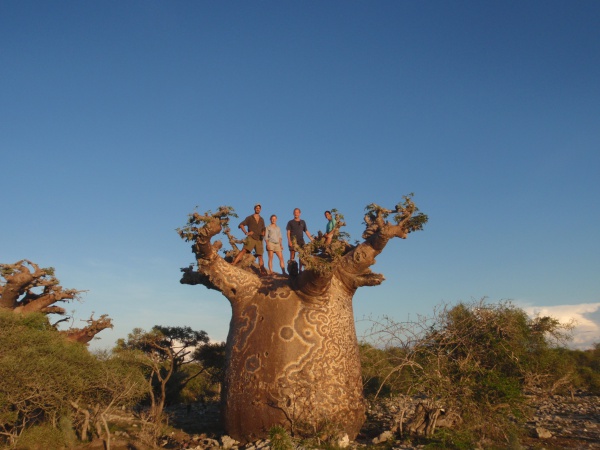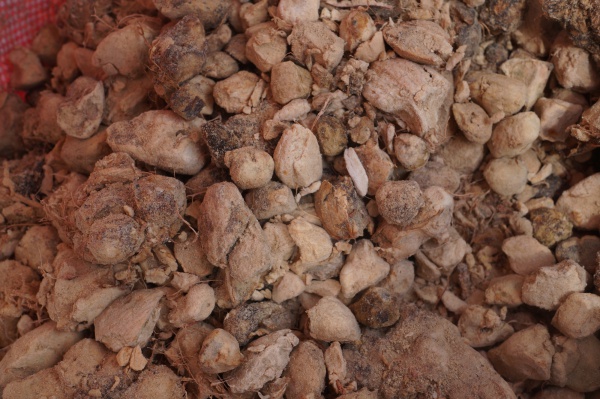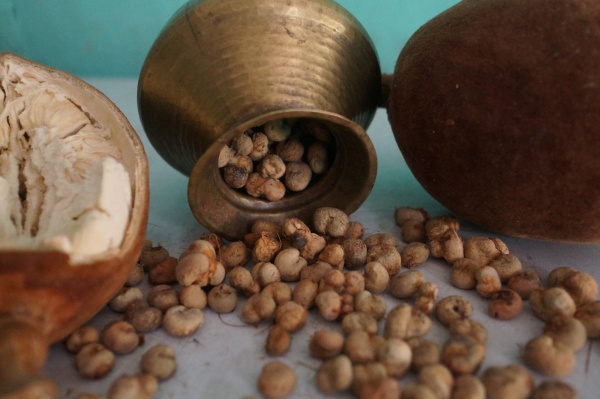Baobab
The Baobab tree grows in different regions of Madagascar and comes in different shapes and sizes. Six out of the nine Baobab species in the world exist only in Madagascar, making the baobab tree symbolic to the country. The tree and its fruits have many uses from practical and nutritional to medicinal and spiritual.
The dry powder from the fruits is used to produce delicious and nutritious drinks, while the seeds are used to produce cooking and massage oils.
The Baobab name originates from the Arabic phrase bu hibab meaning fruit with many seeds. The fruit can contain several hundred seeds. Baobab belong to the Bombacaceae family of trees which includes the Kapok tree.
The first botanical description of the baobab was made by French botanist Michel Adanson and a species was later named Adansonia. The sixth and last Malagasy species was discovered and described in 1960.
Baobabs are found in dry and semi-arid areas which receive less than 500 mm of water per year. They are succulent plants that adapt well to arid environments thanks to their water storage capacity in their thick and swollen trunks which contain up to 80% water.
The baobab only bear leaves in the rainy season and are leafless during the dry season which limits their water loss.
The large flowers of baobab live only for one night and open almost simultaneously for all individuals of the same species. Baobabs are pollinated by sphinx moths, bats and to a lesser extent bees. Birds such as sunbirds and certain lemurs also visit baobab flowers and can have a modest pollinating activity. The oldest known baobab species (A. rubrustipa) located in the Tsimanampetsotse reserve is believed to be over 1,600 years old.
In baobabs, all the cells are alive. This explains their exceptional healing and regeneration capabilities. Baobabs tolerate natural or man-made mutilations well and easily regenerate which sometimes gives them astonishing forms.
The fruit contains a dry and chalky pulp with many nutritional qualities. Pulp, which when mixed with water and sugar, makes a refreshing and vitamin-rich drink.
The baobab fruit has many nutritional properties:
- High natural Vitamin C content (at least 150mg/100g)
- Strong antioxidant properties: Integral Antioxidant Capacity (IAC) - 11.1 mmol/g. This value is significantly higher than that of an orange pulp (IAC = 0.103 mmol/g), and grape seed Oligomers (IAC = 10.25 mmol/g).
- A natural source of minerals including Calcium (293 mg/100g), Phosphorus (96-118 mg/100g), Iron (7-8.6 mg/100g) and Potassium (2.31 mg/100g).
- Vitamin B2 (riboflavin) and Vitamin B3 (niacin).
- Vegetal source of amino acids.
- Soluble and insoluble dietary fibers with prebiotic effects (44.6g/100g)
- The acidulous taste is attributed to the presence of organic acids, such as citric acid, malic acid and succinic acid.
The Baobab fruit has twice as much Calcium as milk and six times the Vitamin C of an orange. According to the International Centre for Underutilized Crops at the University of Southampton (UK), the Baobab is 'a fruit of the future", rich also in vitamin B1, B2. It also contains high levels of iron and potassium.
Baobab dried fruit pulp contains powerful antioxidants. Ranking of ORAC values (Oxygen Radical Absorbance Capacity, method of measuring antioxidant capacities in biological samples) shows Baobab dried fruit pulp to have double the capacity of pomegranate and cranberries, and even more than fruits such as blueberries, raspberries and blackberries.
The flavour of the pulp is somewhere between marshmallow and tamarind.
Baobab seeds are oilseeds, richer in oil than peanuts. Baobab oils contain different fatty acids (palmitic, oleic, linoleic) but also cyclopropenic acids which must be degraded by cooking to make edible oil. The seeds are sometimes roasted and used for coffee.
In the South, women prepare beauty masks from the bark.
On the Mahafaly plateau, the trunk is hollowed out and the cavities are used as cisterns. In the rainy season, they are filled with water reserves for the dry season.
For the Sakalava ethnic group, the baobab is sacred. The species (A. grandidieri) is called "reniala", meaning "mother of the forest".
The Mikea, an ethnic group from the southwest of Madagascar, use Baobab wood to make coffins.
In the bay of Diego-Suarez, several baobab species gathered on an islet serve as graves for stillborn children. Their bodies wrapped in shrouds are abandoned in the forks of the branches.
The Sakalava associate the baobab's wild nature and feminine symbolism.
Sacred baobabs are places of worship dedicated to women and children. The ceremonies, which take place at their foot, focus on the fertility of women, the good health of children and the fertility of the land, particularly during a symbolic ritual called "fitahan-jaza".
A Malagasy legend says that Imbelo, the first man, created the woman by carving her from baobab wood. Many other legends are dedicated to baobab.
The tree has many legends, in particular, one African legend explains that the baobab was once a very beautiful tree but that was a little too pretentious. One day, this angered God who tore it up to punish him and replanted it upside down. Another legend is that it was the devil who pulled out the tree and planted it upside down.
The fruits of baobabs are fleshy, dry, large berries coated in a white, chalky pulp.
It is likely that giant tortoises, the elephant bird (Aepyornis maximus) and large lemurs, were good seed dispersers. This role is probably ensured today by animals introduced by man (zebus, goats, bush pigs) or by water which can sometimes transport the fruits and their valuable cargoes of seeds over long distances.
The appearance of the unopened fruit pods do not degrade for many years and can be used for decoration.
The pulp is very rich in vitamin C and microelements (calcium, potassium, manganese). It has a concentration of vitamin C much higher than that of orange and equivalent to that of kiwi. The fruits can remain on the trees for several months before falling to the ground.
Baobab fruit seeds are bean-shaped. Their size and colour vary depending on the species.
Almost all parts of the tree are used, except the trunk. The fruits are picked from the ground or the tree several tens of meters high using rudimentary ladders.
All Malagasy species are included on the red list of endangered species.
There are numerous sites for observing baobabs. The most famous of them is Baobab Avenue 20 kilometers north of Morondava.
And Majunga is home to a baobab that measures 22 meters in circumference. It is represented on the city's coat of arms and is one of its main tourist attractions.
In Madagascar, many natural baobab sites remain little visited because they are difficult to access.
